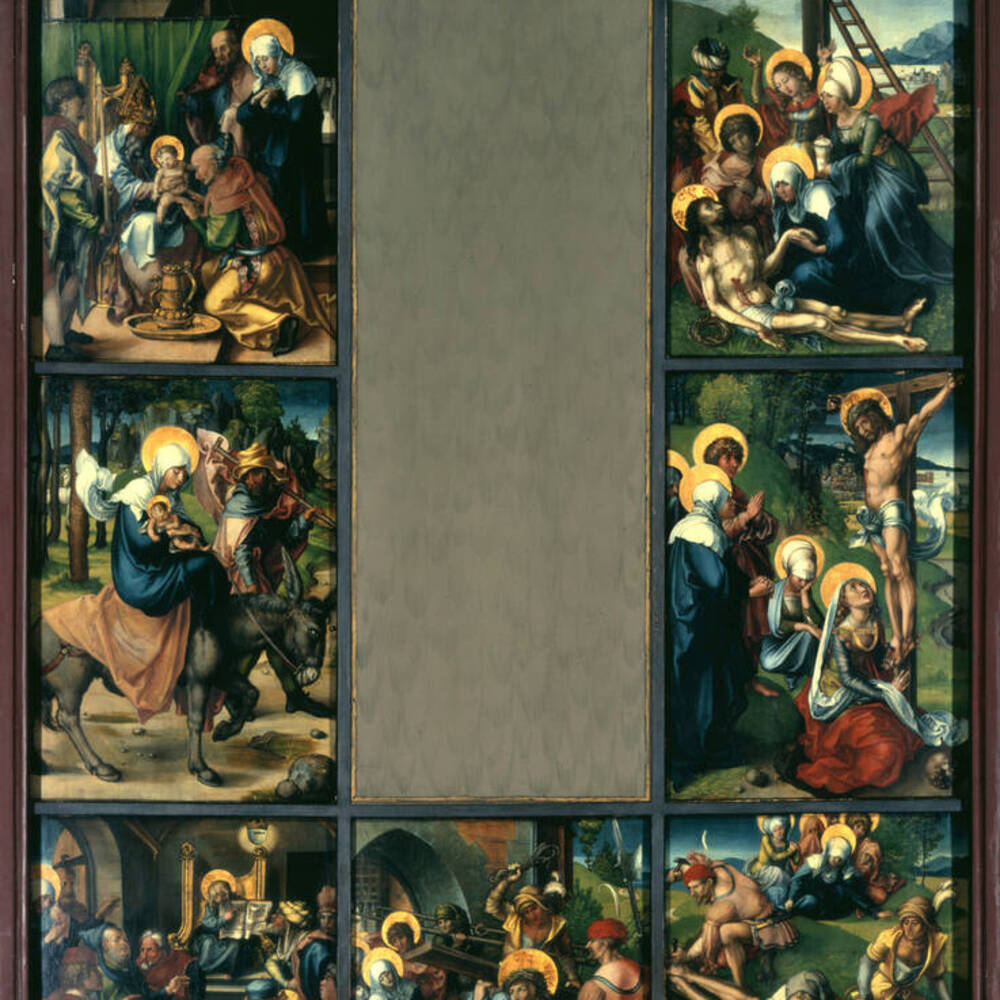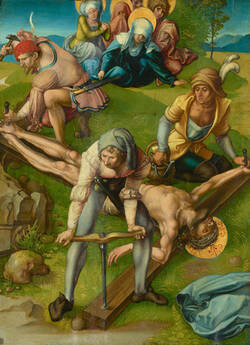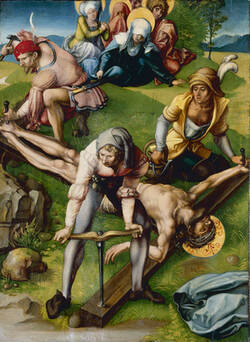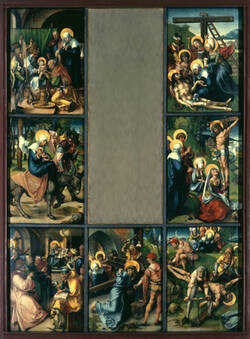This painting was probably Dürer’s first commission from the Elector of Saxony, Friedrich the Wise. It was intended for the Castle Church in Wittenberg. The seven scenes from Christ’s Passion were probably grouped around the “Mother of Sorrows” (now held in Munich). A precise reconstruction of the original form of presentation is not possible, however. The small panels had already been separated before they came to Dresden from Wittenberg as part of the estate of Cranach the Younger.
Further Media





The New Testament contains an account of Mary taking the baby Jesus to be circumcised and meeting Simeon at the Temple. Inspired by the Holy Spirit, Simeon prophesied that the fate of Mary’s son would pierce her own soul like a sword. This is the first of the Seven Sorrows Mary experienced through the events in her son’s life.
The Second Sorrow came with the flight into Egypt to prevent Herod finding Jesus and killing him. The suffering she experienced is only too evident in the four Stations of the Cross in this cycle by Dürer – the Bearing of the Cross, the Nailing to the Cross, the Crucifixion and the Lamentation.
In contrast, the scene at the bottom left seems harmless – the 12-year-old Jesus in debate with scholars in the Temple. Yet this scene is part of Mary’s suffering since she does not know where her son is, believes he is lost and spends three days looking for him.
The moment she finds him is then part of the Seven Joys of the Virgin, which includes joyful events from the Annunciation to the Assumption, when Mary was bodily taken up into heaven. Dürer’s painting of the Seven Sorrows was most likely set up opposite a similar painting of the Seven Joys – as is suggested by five surviving sketches from Cranach’s workshop. You can see the drawings on your device. However, the painting of the Seven Joys has not survived.
For Dürer, then just 26 years old, this work provided a showcase for his virtuoso skills. Shortly after setting up as an independent artist in Nuremberg, he was commissioned to paint this work by Friedrich the Third, Elector of Saxony, known as Friedrich the Wise. The altarpiece most likely hung in Friedrich’s palace church at his residence in Wittenberg – the very same church where Martin Luther later nailed his 95 theses to the door, the event often taken as the start of the Protestant Reformation.
The painting of the Seven Sorrows was intended to encourage silent prayer and devotion in the faithful. For reasons we don’t know, it was moved at some point into the Cranach family workshop, not far from the church. There, careful drawings were made of it – probably intended as detailed studies. While the painting was in the workshop, the panels were also sawn up into individual scenes. In 1588, Cranach’s heirs sold the panels to the Electoral art collection in Dresden. In the course of the centuries, that collection developed into the SKD – the Staatliche Kunstsammlungen Dresden.
- Location & Dating
- 1495/96
- Material & Technique
- Oil on softwood panel
- Dimenions
- 62 x 46,5 cm
- Museum
- Gemäldegalerie Alte Meister
- Inventory number
- Gal.-Nr. 1879